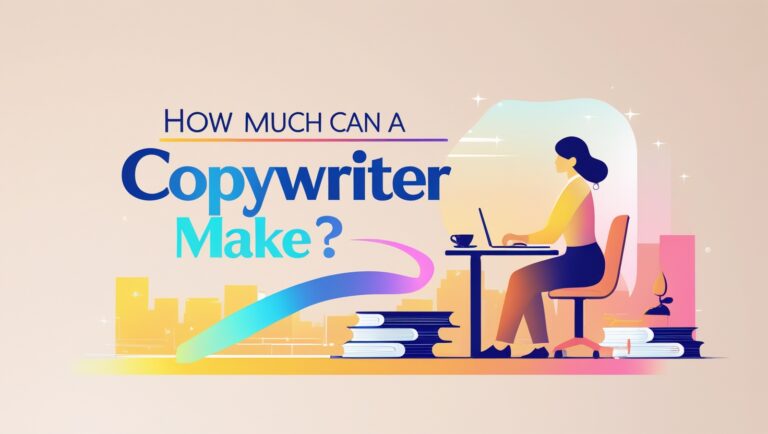The Best Exercises for Copywriters to Boost Creativity & Clarity
Why Practicing Copywriting Matters
I still remember the first time I stared at a blank page with the intention of writing compelling copy. My mind swirled with ideas, but turning them into persuasive sentences felt like trying to bottle lightning. After a few failed attempts, I realized the only way to become a better copywriter was through consistent daily practice.
The good news is, it’s not rocket science. With the right exercises, anyone can strengthen their copywriting skills and discover new ways to connect with their target audience.
These days, people have short attention spans. They click away if your sales copy or social media posts don’t grab them instantly.
That means each piece of copy you write needs to be clear, engaging, and built around what your potential customers truly want. Whether you’re a beginner copywriter or already have some prior experience, it helps to remember that copywriting is part art, part strategy, and part empathy.
In this blog post, we’ll explore tried-and-true exercises and best practices that you can weave into your daily practice to become a good copywriter (and possibly even a great writer) over time. You’ll discover the power of the shitty first draft, how to use fewer words to sharpen your message, and different ways to develop a swipe file that will serve as your secret weapon for generating high-converting pieces of copy.
So, if you’re ready to tackle writer’s block, speak to your pain points, and truly understand what makes your readers tick, let’s jump in.
1. Embrace the “Shitty First Draft” Philosophy
If there’s one concept that’s helped countless copywriters break free from perfectionism, it’s the notion of the shitty first draft. Coined by writer Anne Lamott, the idea is simple: your first draft doesn’t have to be good. In fact, it can be downright bad copy. What matters is that you get your ideas out of your head and onto paper (or screen), so you have something to shape and refine.
Why It Works
- It Lowers the Stakes
Staring at a blank page can feel intimidating. The “shitty first draft” approach releases the pressure to produce brilliance on your first try. Instead, your job is simply to create something, knowing full well you’ll improve it later. - It Keeps Creative Juices Flowing
When you’re not censoring yourself or stopping to perfect every sentence, you remain in a more natural state of flow. This can lead to surprising insights, unique phrases, or interesting angles you might not discover if you kept pausing to self-edit. - It Speeds Up the Writing Process
In copywriting, time is often money. Whether you’re crafting product descriptions for an eCommerce site or finalizing sales pages for a client, you don’t have much time to dally. By getting your raw thoughts down quickly, you give yourself a head start on producing polished work.
Practice Exercise: The 10-Minute Free-Write
- Step 1: Set a timer for 10 minutes.
- Step 2: Pick a topic (e.g., a product, an idea, or a service) relevant to your target audience.
- Step 3: Write continuously until the timer goes off. Don’t worry about grammar or structure.
At the end, take a short break, then return for editing. This creative copywriting exercise can be a great way to come up with fresh angles you wouldn’t see if you edited every line as you wrote it. The “shitty first draft” method reminds us that the first step is simply getting words onto the page, even if they’re messy.
2. Build and Maintain a Swipe File
Great copywriters from legends like Gary Halbert to modern pros like Alex Cattoni swear by the power of a swipe file. A swipe file is a personal collection of great examples of marketing materials (emails, sales letters, social media posts, landing pages, print ads, and more) that you can reference whenever you’re stuck or in need of inspiration.
Why It’s Powerful
- You Learn from Proven Successes
By studying real-life examples of persuasive copy, you train your brain to see patterns that work. For instance, noticing how a brand addresses pain points or uses a compelling subject line can inspire you to tweak your own approach. - You Stay Current
Marketing trends shift quickly, and the kind of language that resonated five years ago might not work today. A well-maintained swipe file draws from various sources—like e-newsletters, commercials, or even social media marketing campaigns—so you’re constantly updating your sense of what’s hot. - You Save Time
When you’re in a pinch for ideas or running low on creative juices, flipping through a swipe file is often the quickest way to find a spark. You won’t copy anything word for word, of course, but you can glean structural ideas, emotional hooks, or design elements.
Practice Exercise: The Weekly Swipe Review
- Step 1: Set aside a single day each week to review your collected materials. This can be every Friday morning, for example.
- Step 2: Choose three pieces from your file. Look for commonalities like the tone, headline structure, or offer (e.g., “free trial,” discount, bonus).
- Step 3: Rewrite each piece in your own voice, focusing on how you’d tailor it for a different brand or target audience.
This copywriting practice teaches you to think more critically about why certain phrases or techniques work. It also helps you develop different ideas for your own projects.
3. Try Hand Copying Classic Ads (the Gary Halbert Method)

Gary Halbert, often called the “Prince of Print,” believed one of the best ways to improve copywriting skills was to manually copy successful ads and sales letters. He even recommended filling notebooks by hand with proven ad copy. Yes, it might sound old-fashioned in the age of AI copywriting tools, but this method remains a great copywriting exercise.
Why It Works
- Muscle Memory Meets Mindset
When you rewrite great ads by hand, you internalize the rhythm, phrasing, and emotional hooks that top copywriters use to grab attention and drive action. - Detailed Observations
Typing can be mechanical. Handwriting requires more focus, so you’ll naturally pick up subtleties, like how the original copy addresses objections or uses bold language to highlight benefits. - Deeper Connection with the Craft
This isn’t just about memorizing phrases. Over time, you’ll begin to see how top copywriters layer ideas to keep people reading from headline to call-to-action.
Practice Exercise: The Halbert Copy-By-Hand Routine
- Step 1: Choose an iconic piece of copy, something from your swipe file that truly resonates. It might be a classic magazine ad or a modern product sales page you admire.
- Step 2: Write it out by hand, slowly and thoughtfully. Notice the word choices, transitions, and any power words like “guaranteed,” “limited,” or “secret.”
- Step 3: After you finish, annotate your copy with notes on why certain phrases worked. This step cements your takeaways.
Over time, you’ll create your own mental library of proven copy structures that you can adapt to your real world projects.
4. Practice Writing Multiple Headlines or Subject Lines
Headlines and subject lines are often the gateway to the rest of your message. Mastering them can take you from a good copywriter to a truly great writer. People decide in milliseconds whether or not to keep reading based on that opening punch.
Why Headlines Matter
- Short Attention Spans
Online readers, especially, have little patience. A great headline grabs them immediately by speaking to their deepest pain points or offering a compelling benefit. - Sets the Tone
The headline or subject line is your chance to establish context. Whether your tone is playful, urgent, empathetic, or straightforward, the opening line signals what’s to come. - Competitive Edge
Each time a person scrolls through their inbox or social feed, they skim countless messages. Headlines that stand out can dramatically improve open rates and engagement.
Practice Exercise: Write 10 Different Headlines
- Step 1: Choose a topic or product you need to promote. For instance, let’s say you’re crafting a blog post for small business owners on how to write landing pages that convert.
- Step 2: Write at least 10 different headlines or subject lines. Don’t critique yourself as you go; just aim for variety (e.g., a benefit-focused headline, a how-to, a curiosity teaser, etc.).
- Step 3: Evaluate them after a short break. Which ones speak directly to the target audience and promise the most immediate benefit or curiosity?
The best part is, once you get used to generating multiple options, you’ll never feel stuck again. You’ll have a stash of possible angles you can refine, test, and reuse the next time a new project comes up.
5. Master Tight, Punchy Sentences (Use Fewer Words)
One of the biggest differences between bad copy and copy that sells is clarity. Readers don’t have the bandwidth for fluff, especially in a world flooded with content. Learning to use fewer words without losing meaning is a hallmark of great copywriting.
Why Brevity Sells
- Immediate Clarity
Cluttered language can bury your main benefit. Clear, concise copy delivers the promise fast, which is critical for capturing those with short attention spans. - Better Flow
Brevity keeps your message from dragging. It also makes editing easier. Once you’re comfortable trimming sentences, you’ll find your overall message is more coherent and persuasive. - Respect for the Reader
People value their time. They want the solution, the insight, or the story—fast. Showing you respect that time is a great way to win them over.
Practice Exercise: The “Cut Your Copy in Half” Challenge
- Step 1: Select a piece of your writing, ideally a paragraph of around 100 words.
- Step 2: Rewrite it using half as many words. Keep the same core message, but remove filler phrases and redundancies.
- Step 3: Compare the two versions. Which one is sharper? Which one would your potential customers prefer reading?
This challenge is a great reminder that more words don’t always mean more impact. Over time, you’ll develop an instinct for conciseness, making you a more effective copywriter.
6. Do Daily Observational Writing

Believe it or not, some of the most compelling copy isn’t born in a cubicle or from a quick brainstorming session, it’s inspired by everyday life. Observational writing forces you to pay attention to the world around you, capturing real emotions, challenges, and successes that resonate with real people.
Why It’s Effective
- Connects You to Real People
Copywriting is about solving problems or fulfilling desires. By observing daily life (conversations in a coffee shop, the frustrations of a friend launching a side hustle) you discover genuine angles for your copy. - Builds Your Empathy
One of the cornerstones of persuasive copy is empathy. When you understand what people feel, fear, and hope for, you can tailor your messages to truly speak to them. - Keeps Your Writing Fresh
Inspiration from real experiences trumps formulaic marketing speak. It helps you avoid clichés and craft copy that feels alive and authentic.
Practice Exercise: The Daily Journal
- Step 1: Carry a small notebook (or use an app) and jot down interesting phrases or interactions you overhear, maybe a complaint about a slow internet connection or an offhand comment about a frustrating product experience.
- Step 2: Each evening, pick one of these observations and write a few lines of hypothetical sales copy or a social media post that addresses it.
- Step 3: Over time, build a mini “idea bank” of real-life insights you can use in future campaigns.
By making observation a habit, you’ll never run out of fresh ideas, and your copy will resonate more strongly because it’s grounded in genuine human experience.
7. Rewrite Existing Sales Pages or Product Descriptions
Another great place to practice is rewriting existing sales pages or product descriptions. You don’t need permission to do this as an exercise, because you’re not publishing the copy for commercial use. It’s simply a way to hone your skills by taking something that already exists and making it better.
Why This Exercise Works
- You Practice Problem-Solving
Every piece of copy has a goal: sell a product, sign up new subscribers, encourage a free trial. When you rewrite that copy, you’re tackling the same goal but with your personal style and insights. - You Learn the Art of Optimization
Often, bad copy fails to highlight the true benefits or speak to pain points. When you revise it, you train yourself to spot these missed opportunities. - You Gain Confidence
Seeing how your version stacks up can be a great way to track your progress. You start to trust your intuition about what language resonates with a target audience and what falls flat.
Practice Exercise: The Product Makeover
- Step 1: Choose a product or service page that seems lackluster. Maybe it lacks a strong headline or doesn’t address consumer doubts.
- Step 2: Analyze what’s missing. Does it ignore pain points? Does it bury key benefits in jargon?
- Step 3: Rewrite the headline, subheadings, and key bullet points. Aim to make the benefits crystal clear, emphasize user results, and create a sense of urgency or excitement.
Repeat this process with different industries (tech, beauty, finance) to develop a versatile writing style. Over time, you’ll become more adept at turning so-so copy into something that speaks to your reader and drives them to take action.
8. Test Your Copy in Real Scenarios (Even if You’re a Beginner)
It’s one thing to do copywriting exercises in isolation, but you need real world feedback to truly grow. If you’re new or haven’t landed clients yet, don’t worry, you can still find ways to test your copy in front of an audience.
How to Get Real Feedback
- Social Media Posts
Got personal or professional social media handles? Experiment with short, snappy captions or status updates, and pay attention to likes, comments, and shares. This can give you insight into what types of hooks or calls-to-action resonate with people you know. - Local Small Businesses
Many small business owners struggle with copy. Offer a quick one-paragraph makeover for their home page or a promotional flyer. In exchange, you’ll get honest feedback and a testimonial if your copy performs well. - Online Communities
Forums like Reddit’s r/copywriting or private Facebook groups for writers can be a great place to share short pieces and ask for constructive criticism. You’ll not only improve your copy but might also network with expert copywriters in the process.
Practice Exercise: One-Week Live Test
- Step 1: Write a promotional social media post or email for a friend’s side hustle (with their permission). It might be a short pitch for an upcoming workshop or special discount.
- Step 2: Publish it and track the results, clicks, comments, or sign-ups.
- Step 3: Gather constructive criticism from your friend or the audience. Did they like the tone? Was the message clear?
- Step 4: Rewrite and test again if possible. See if the revised version generates better engagement.
This iterative process helps you learn that the only way to confirm if copy is effective is to put it in front of actual readers. Metrics don’t lie, and real feedback is invaluable.
9. Explore AI Copywriting Tools (But Don’t Rely on Them Completely)
As someone who’s spent a long time writing by hand and drafting everything from landing pages to blog posts, I understand the hesitation around AI copywriting tools. However, they can be your best friend when you’re crunched for time or looking to spark new ideas. The key is using them wisely, not letting them take over your entire writing process.
When AI Tools Help
- Overcoming Writer’s Block
If you’re stuck on a phrase or kind of language, an AI tool can spit out suggestions to give you a head start. - Generating Different Ideas
Tools like ChatGPT or Copy.ai can provide sample outlines or different headlines, which you can then refine to match your brand’s voice. - Scaling Content
For large projects like eCommerce sites with hundreds of product descriptions, AI can help create first drafts that you can polish.
Practice Exercise: The AI Remix
- Step 1: Use an AI tool to generate a short marketing paragraph or email subject line for a given product.
- Step 2: Revise it to ensure it fits your brand’s persona, and insert your unique spin.
- Step 3: Compare the AI’s final copy to your original. Which elements work, and which need your personal touch?
This is a good idea to keep your writing “human” and ensure you’re not producing a robotic-sounding message. Remember, AI is a tool, not a complete substitute for a great copywriter.
10. Study Consumer Psychology and Marketing Basics
Copywriting sits at the crossroads of psychology, marketing, and creative writing. Understanding why people buy is just as important as being able to craft a great headline or well-structured paragraph. If you’re not tapping into the emotional triggers or addressing pain points, you’re leaving conversions on the table.
Key Psychological Principles
- Social Proof
Testimonials, case studies, and user-generated content can make your offer more credible. Showcasing how other people have benefited eases doubts and boosts trust. - Scarcity and Urgency
Whether it’s a free trial expiring soon or a limited-time offer, deadlines and availability prompts people to act rather than procrastinate. - Reciprocity
Offering something of value (like a free guide or exclusive online courses) can encourage potential customers to return the favor by signing up or making a purchase.
Practice Exercise: The “Psych Trigger” Rewrite
- Step 1: Choose a paragraph of copy (could be from your own draft or a sample from your swipe file).
- Step 2: Identify which psychological triggers are missing. Does it need more social proof, or would a time-limited offer help?
- Step 3: Rewrite the paragraph, weaving in one or two triggers naturally. Avoid being manipulative; aim for honest, persuasive copywriting.
By blending these principles into your daily practice, you’ll find your copy resonates more deeply and nudges readers toward the action you want them to take.
11. Leverage Content Marketing and SEO Best Practices

It’s easy to focus solely on the artistry of words and forget about where your copy lives. In digital spaces, search engine optimization (SEO) can elevate your messaging to a wider audience. After all, even the most persuasive copy won’t convert if people can’t find it.
Essential SEO Elements for Copywriters
- Keyword Research
Identify the terms your readers search for. If you’re writing about “simple copywriting exercises,” include synonyms and related phrases like “best copywriting exercises” or “creative copywriting exercises” naturally. - On-Page Optimization
Craft clear meta titles, meta descriptions, and subheadings (H2, H3, etc.). This helps search engines understand your content’s context. - Quality over Quantity
Stuffing fewer words with too many keywords can lead to spammy text. Focus on providing real value, then integrate keywords smoothly.
Practice Exercise: SEO-Optimized Blog Post
- Step 1: Pick a topic relevant to your brand’s audience, such as “How to Practice Copywriting Skills: 5 Effective Exercises.”
- Step 2: Perform basic keyword research (using tools like Google Keyword Planner or SEMrush). Identify three core keywords and a handful of secondary ones.
- Step 3: Write a short blog post weaving in those keywords logically. Make sure each section addresses a specific query or angle.
- Step 4: Format the post with subheadings, bullet points, and internal/external links to authoritative sources.
This approach trains you not just to write engaging copy, but to design it for online visibility, a must for modern content marketing.
12. Get Constructive Criticism from Mentors or Peers
We all have blind spots. Sometimes, we’re too close to our own work to spot weak headlines or extraneous paragraphs. That’s where constructive criticism comes in. Seeking feedback from peers, mentors, or even clients (if possible) is the right way to accelerate growth.
How to Make the Most of Feedback
- Ask Specific Questions
Rather than “What do you think?” ask, “Does this address the reader’s main concern clearly?” or “Is the call-to-action obvious enough?” - Listen Without Defensiveness
Remember, feedback isn’t personal. It’s about strengthening the copy. Even expert copywriters seek fresh perspectives. - Implement Changes, Then Reassess
Make the suggested changes, set the piece aside for a day, then revisit with fresh eyes. You’ll see your copy in a new light.
Practice Exercise: Peer Review Workshop
- Step 1: Join a small group of writers or ask a fellow copywriter friend to swap short assignments (like a product blurb or email pitch).
- Step 2: Give each other actionable feedback on tone, clarity, and persuasion.
- Step 3: Revise based on their notes, and do a short follow-up to see if the changes improved the copy.
Collaboration can be a great way to refine your instincts, pick up new techniques, and build lasting relationships in the copywriting community.
13. Discover (and Use) Power Words Strategically
Sprinkling “power words” into your copy can heighten emotion, create a sense of urgency, and paint vivid pictures in your reader’s mind. These words often trigger an emotional or psychological response. However, don’t overdo it. Too many power words can make your writing feel forced or salesy.
Examples of Power Words
- “Exclusive” – implies something special or not widely available.
- “Proven” – signals evidence, results, or trustworthiness.
- “Instantly” – triggers immediate gratification.
- “Revealed” – teases discovery of new information.
- “Limited” – nudges people with a sense of scarcity.
Practice Exercise: Power Word Replacement
- Step 1: Take a short paragraph from your writing where you want to enhance persuasion.
- Step 2: Identify three verbs or adjectives you can replace with stronger ones (e.g., switch “great” to “extraordinary,” if it fits contextually).
- Step 3: Read it aloud. Does it feel more vibrant? Are you going overboard? Adjust as needed.
Over time, you’ll develop an instinct for weaving power words into your pieces of copy. Just remember that authenticity matters more than flashy language.
14. Read Widely from Copywriting Books and Beyond
While online courses and blogs are useful, there’s still a special place for copywriting books and classic literature. Reading widely keeps your writing fresh, your vocabulary diverse, and your perspective broad.
Recommended Reading
- “Ogilvy on Advertising” by David Ogilvy – A classic covering timeless principles.
- “Breakthrough Advertising” by Eugene Schwartz – Explores the psychology behind persuasion.
- “Hey, Whipple, Squeeze This” by Luke Sullivan – Modern take on advertising with humor and practical tips.
Additionally, reading outside the marketing realm (novels, essays, journalism) can help you develop a unique writing style that stands out in a sea of similar content.
Practice Exercise: One Book, One Lesson
- Step 1: Pick a best book in the copywriting or marketing sphere.
- Step 2: As you read each chapter, summarize the core lesson in two or three sentences.
- Step 3: After finishing the book, pick your strongest summary and expand it into a short article or blog post explaining how you’ll apply that principle in your own work.
By reflecting on and applying the insights you gain, you ensure that knowledge becomes part of your daily life as a copywriter.
15. Create a Consistent Daily or Weekly Practice Schedule

At the end of the day, even the most effective daily copywriting exercises won’t help if you only do them once. Consistency is key. Whether you can spare just a little time each morning or block off a few hours every weekend, developing a schedule is the best way to maintain momentum.
Structuring Your Practice
- Daily Quick Hits: Spend 15 minutes brainstorming different headlines, rewriting a short paragraph, or analyzing an ad from your swipe file.
- Weekly Deep Dives: Allocate a larger chunk of time (1-2 hours) to do a more involved copywriting exercise, like rewriting an entire sales page or testing your copy in a live scenario.
- Monthly Review: Look back on your progress. What’s improved? Where do you still get stuck?
Practice Exercise: Personal Accountability Log
- Step 1: Create a simple spreadsheet or use a project management tool (like Trello or Asana).
- Step 2: Each time you complete a practice session (be it 10 minutes or an hour) log what you did and any insights or results.
- Step 3: Review your log at the end of the month to see how much you’ve grown and what you might focus on next.
The easiest way to develop real mastery is through repetition. By turning these exercises into a habit, you’ll see noticeable gains in clarity, persuasiveness, and overall impact.
Conclusion
Becoming a better copywriter isn’t about memorizing formulas or waiting for a burst of inspiration; it’s about consistent daily practice and real-world testing. You don’t have to spend an entire year holed up in your office churning out content, but a little hard work spread over time pays big dividends. Each shitty first draft refines your voice. Each swipe file entry expands your thinking. Every piece of constructive criticism points you closer to the mark.
Above all, remember that any skill (writing included) develops through a willingness to learn, experiment, and adapt. As you incorporate these exercises, keep track of your progress and celebrate the small wins. Before you know it, the blank page won’t feel intimidating at all. Instead, you’ll see it as an open invitation to engage, persuade, and solve problems for your readers.
Now, I’d love to hear from you: Which of these exercises resonates the most with you? Do you already have a favorite copywriting exercise you swear by, or is there one here you’re excited to try? Share your thoughts in the comments below. If you found these tips helpful, feel free to pass the post along to fellow writers who might want a leg up in their copywriting practice.
Here’s to leveling up our copywriting skills, one piece of copy at a time!






